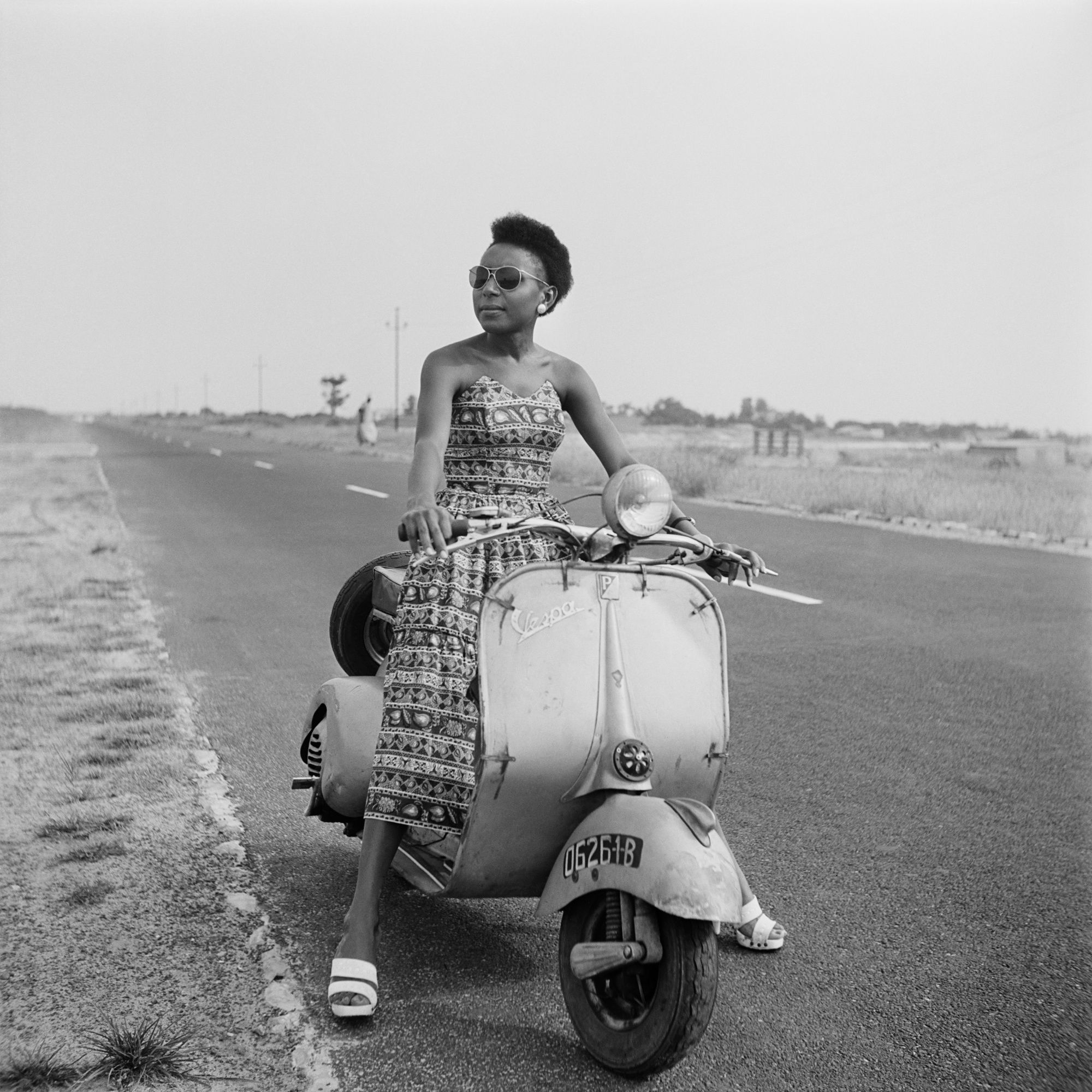These Newly Discovered Photos From 1950s Senegal Capture the Good Times During an Era of Political Change
Unearthed photos by Roger DaSilva, which will be on display at the Also Known As Africa art and design fair in Paris this November, include rare images of presidents, jazz icons and everyday people in pre-independence Senegal.
A newly discovered collection from Senegalese photographer Roger DaSilva offers a rarefied glimpse into life in 1950s Senegal. DaSilva was born in Benin and took up photography after joining the French army in 1942. He returned to Dakar, considered his "adopted home" in 1947, where he began to capture the city's bustling social scenes. Instead of working within the confines of a studio in the tradition of fellow photographers Malick Sidibé and Samuel Fosso, DaSilva frequented "the city's night clubs and upscale weddings, he captured the vibrancy of youth culture in the post-war period and the African independence movements that were beginning to emerge."
The recently unearthed archive of over 100 of his images, which were restored by the Josef and Anni Albers Foundation will debut at AKAA (Also Known As Africa) art and design fair in Paris for the first time next month. It will mark the first time that the images are shown outside of Senegal.
The images tell a multifaceted story of pre-independence Senegal. A common thread in DaSilva's photographs is the obvious glamor of his subjects, whether that be a family posed elegantly in front of their home while dressed in traditional attire, a religious gathering of men in all white, or a multiracial group of young men and women socializing in a night club. Da Silva was also an actor and tap dancer, who had access to "high society" and exclusive circles. His collection includes self-portraits of him with jazz icons the likes of Louis Armstrong and Velma Middleton as well as photographs of Senegal's first President Léopold Senghor. They capture elegance and camaraderie, as well as the "good times" in an era in which they are often overlooked.
"Roger DaSilva's work brings to life a reality little documented until now," reads a statement from the Albers foundation. "In the pivotal historical context surrounding Senegal's accession to independence, it provides us with a fresh perspective on Senegalese cultural and social history and makes a significant contribution to West African photography."
The collection will be on display at the AKAA in Paris from November 9-11. The six images on display will be on sale, with all proceeds going to Senegalese non-profit organization Le Korsa.
Check out a preview of the exhibition below.
Roger daSilva (C) 2018 The Josef and Anni Albers Foundation Courtesy Xaritufoto and Le Korsa
Dakar, c. 1952
Roger daSilva (C) 2018 The Josef and Anni Albers Foundation Courtesy Xaritufoto and Le Korsa
Dakar, c. 1952
Roger daSilva (C) 2018 The Josef and Anni Albers Foundation Courtesy Xaritufoto and Le Korsa
Dakar, c. 1952
Roger daSilva (C) 2018 The Josef and Anni Albers Foundation Courtesy Xaritufoto and Le Korsa
Dakar, c. 1952
Roger daSilva (C) 2018 The Josef and Anni Albers Foundation Courtesy Xaritufoto and Le Korsa
Madame Gomez and children, Dakar, c. 1958.
Roger daSilva (C) 2018 The Josef and Anni Albers Foundation Courtesy Xaritufoto and Le Korsa
Roger daSilva, self-portrait with Velma Middleton, Dakar, c. 1952
Roger daSilva (C) 2018 The Josef and Anni Albers Foundation Courtesy Xaritufoto and Le Korsa
Dakar, c. 1952
Roger daSilva (C) 2018 The Josef and Anni Albers Foundation Courtesy Xaritufoto and Le Korsa
Dakar, President Leopold Senghor, c. 1952
Roger daSilva (C) 2018 The Josef and Anni Albers Foundation Courtesy Xaritufoto and Le Korsa
Dakar, c. 1952
- These Photographers From Africa and Its Diaspora Expose the ... ›
- Anunaka's South African Photos Confront the Fear of Freedom ... ›
- Photos: How La Sunday Became Abidjan's Favorite Party - OkayAfrica ›
- Spotlight: Artist, Ngadi Smart, Captures Black Sensuality, Sexuality ... ›
- 100 Women: Malin Fezehai Is the Renowned Photographer Helping ... ›
- Andy Mkosi’s Photo Essay ‘Mid-Groove’ Documents Joburg’s Party Scene - OkayAfrica ›
- Meet Four Women Pushing Ivorian Art Forward Through Photography - OkayAfrica ›
- Interview: Catherine E. McKinley's 'The African Cookbook' - OkayAfrica ›
- Ethiopian Artist Aida Muluneh's 'Water Life' Is a Response to the Urgent Threat of Water Scarcity - Okayplayer ›
- These Portraits by African Photographers Reveal the Power In Self-Presentation - Okayplayer ›
- In Photos: Senegal's Joyous New Year's Celebration, the Fanal - OkayAfrica ›
- In Conversation with Hassan Hajjaj on Artist Solidarity and the Impact of 'La Caravane' - Okayplayer ›
- Joshua Kissi Is Using Photography To Build a Safe Haven for People of Color - Okayplayer ›
- First Look: This New Book Celebrates Women Photographers from the African Diaspora - OkayAfrica ›
- Remembering Malick Sidibé - OkayAfrica ›
- The Style & Spirituality Of Senegal's Baye Fall Mystics In Photos - Okayplayer ›
- The Vintage Ugandan Photography Of Musa Katuramu - Okayplayer ›
- A Retrospective Of Rotimi Fani-Kayode's "Black, African, Homosexual Photography" In London - Okayplayer ›
- Hassan Hajjaj's Moroccan Biker Barbie Dolls - Okayplayer ›
- Photos: James Barnor 'Ever Young' - Okayplayer ›
- In ‘Life After 100’ a Photographer Brings Nigeria's Elders Into Focus | OkayAfrica ›
